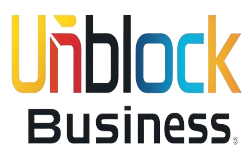Power interruptions are stressful for customers. They are also defining moments for utility brands. The difference between a frustrated caller and a loyal advocate often comes down to whether your operation can anticipate questions, communicate clearly, and resolve issues quickly. That starts with a contact center model built for the realities of the energy sector.
If you are reviewing your approach for the next storm season, it helps to anchor on a few utility-specific building blocks.
Start with a utility-ready CX foundation
Most outage spikes are multi-channel by nature. Customers check status pages, reply to texts, open chat, then call if they still need answers. A unified backbone for routing, history, and reporting keeps those touchpoints in sync. If your channels still operate in silos, study what modern omnichannel call center solutions enable during high-volume events, and align that with the outcomes energy providers care about on the dedicated energy industry page.
Flex for surges without sacrificing quality
Wind shifts. Call volume does too. Utilities need staffing models that scale up quickly for the first 24–72 hours, then taper without leaving idle time on the schedule. An approach grounded in elastic CX helps you plan by hour and queue, while blended teams handle both inbound and outbound support as conditions change.
Make proactive outbound your first line of defense
Silence creates ticket backlogs. Proactive messages cut them down. Trigger two-way SMS as soon as a feeder trip is detected, escalate non-responders to voice, and route medically vulnerable customers to a live agent path. The architecture behind that playbook mirrors proven practices in case studies for energy and natural gas companies, where outreach reduced unnecessary truck rolls and repeat calls.
Keep customer data safe while moving fast
Outage conversations often include addresses, meter numbers, and payment details for deposits or reconnections. You need security controls that protect sensitive information without slowing resolution. Confirm your stack against the standards outlined in security and compliance and refresh your policies with this clear primer on data compliance essentials. If you collect card info for fee waivers or reconnection payments, align processes with the guidance in reasons to work with a PCI-compliant call center.
Use AI as a radar, not an auto-pilot
During a storm, every second matters. Real-time tooling can spot spikes in “downed line” mentions, identify neighborhoods with rising frustration, and flag calls with safety keywords. See how teams are operationalizing this in AI call monitoring and applying pattern-finding from AI-powered data mining in contact centers. The goal is not to replace humans but to point them at the highest-risk moments faster.
Train agents for safety conversations
Utility callers are often anxious, sometimes in danger, occasionally angry. Scripts alone will not carry you through that mix. A structured agent training process with scenario drills, empathy cues, and plain-language explanations builds confidence on the line. Programs that focus on creating empowered agents also shorten handle time without rushing safety steps.
Measure what matters to regulators and customers
Great outage CX is measurable. Track time to inform, percent of customers proactively notified, self-service containment, first-contact resolution, and restoration-to-notification lag. If you are tuning dashboards, borrow ideas from these best practices for benchmarking the contact center. For leadership buy-in, roll those metrics into a single “community impact” score that pairs operational speed with sentiment.
Do not forget payments and credit adjustments
After power returns, the next wave of contacts starts: billing questions, credit eligibility, equipment replacement claims. A utility-aware collections and billing desk, integrated with CIS and payment gateways, reduces friction and chargebacks. The broader playbook on financial services support is useful when your team must handle refunds, plan changes, or hardship options at scale.
Plan B when your sites go dark
Storms can take facilities offline too. Maintain a distributed footprint with redundant connectivity and clear runbooks for at-home activation. If you still rely on a single site, revisit your continuity strategy using the remote framework outlined in the work-at-home BPO solution guide so service stays available even when local conditions are tough.
A simple playbook you can pilot before hurricane season
- Map your top five outage call drivers and link each to a proactive message template
- Stand up a two-way SMS path with escalation to voice and secure chat
- Add real-time monitoring for safety phrases and long-hold risk using AI call monitoring
- Run a one-day drill for supervisors focused on surge routing and rapid coaching
- Publish a post-incident report that blends KPIs with customer stories to drive continuous improvement
Resilience is no longer just about linemen and trucks. It is also about the clarity, speed, and empathy of the voices that answer when the lights go out. With the right channels, training, and safeguards, your outage communications can turn a tough day into a lasting trust dividend.
If you are mapping your next season’s plan and want a deeper dive into utility-specific workflows, the resources here are a strong starting point: energy industry, omnichannel routing, elastic staffing, and a real-world energy case study.



